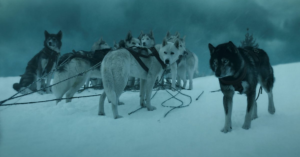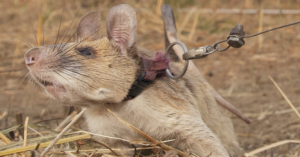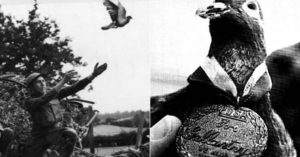A hero can be many things. When you think of heroism, you might not think of animals, but there have been many heroic animals in the past.
When we think of a heroic person we often picture the cartoon or fictional superheroes that are commonly seen on television and in movies, such as Batman or Superhero. Heroes can also be doctors, teachers, firefighters, and other people who work to help others, and many people consider their own parents or relatives as their own personal heroes. But the definition of a hero is not limited to these examples, and you don’t have to have a specific career or a superpower to be considered one.
In fact, you don’t even have to be human. So many animals across history have had awards bestowed upon them for heroic actions, whether they have helped in war, helped in the transportation of medicine or goods, or worked to prevent a disaster. Animals play such an important role in our lives and in the world, that sometimes they deserve a little extra recognition.
Balto and Togo the Dogs

In 1925, a few citizens of the large, yet isolated Alaskan town of Nome fell ill with what was originally thought to be tonsillitis but was later discovered to be diphtheria. Several children died from the disease, and Nome’s only doctor, Curtis Welch, became increasingly worried. There was an antitoxin that could help with diphtheria, but Nome’s supply had expired and had been useless for several months.
Although a replacement shipment was placed, the outbreak, unfortunately, happened in winter, and the shipping ports were covered in ice, which made it impossible to get the medicine to Nome in time by boat. Fearing an epidemic, Dr. Welch sent a desperate plea for help to surrounding communities and the U.S. Public Health Service. At this point in time, the snowmobile had not yet been invented, and the below-freezing temperatures in Alaska would not permit airplane delivery.
So in order to get the diphtheria antitoxin from Anchorage, nearly 1,000 miles from Nome, Welch turned to Alaska’s tried and true method of transportation: sled dogs. But even though sled dogs were commonly used in this frigid state, there were still many hazards for the dogs and mushers to face. The cold air could be harmful to humans and animals alike, and it was difficult to get traction on the slick ice.
Nevertheless, the relay from Anchorage to Nome was a success, thanks largely in part to two sled dogs named Balto and Togo. Togo ran the majority of the relay and isn’t as well known as Balto, who finished off the last leg. Togo and Balto’s participation in the serum run made sure that the death count from diphtheria stayed low in Nome, and they are still considered heroes nearly a hundred years later.
Magawa the Rat

Magawa, a giant African pouch rat from Cambodia, has gained recognition as one of the most heroic animals more recently than Balto and Togo. Although it may not seem like an animal as small as a rat could have a role important enough to be considered a hero and to be given a gold medal by the United Kingdom veterinary charity People’s Dispensary for Sick Animals, Magawa has already saved countless lives with his thorough dedication to his job. The rat, along with many others of his species, was trained by a nonprofit organization in Tanzania to do very important task-find land mines. Land mines are a serious issue for Cambodia, and a number of Cambodians fall victim to the bombs each year.
Usually, dogs are the animals that are trained to sniff out bombs, but rats get the job done just as well in Africa and Asia, especially because they are small enough that they won’t set off the bombs. Magawa himself has covered over 140,000 square meters since he was trained, and has discovered over 60 unexploded land mines, actions that have, without a doubt, prevented what could have been catastrophic for surrounding towns and families.
When Magawa comes across a land mine, he is supposed to stop and start scratching to alert his handlers of the danger. When John Smith, leader of the PDSA in the U.K., awarded Magawa his gold medal a few weeks ago, it was the first time the organization had given the award to a rat.
Cher Ami the Pigeon

World War I was a momentous event in our world’s history, and although it resulted in millions of tragic casualties from all over the world, that number could have been far higher if not for the use of carrier pigeons. Like Magawa the rat, it seems hard to believe that a creature so small could have such a great impact, especially in an event like World War I. But the pigeons were crucial to the transmission of information between allies and troops, and Cher Ami was one of these message-carrying heroic animals.
In 1918, one hundred and ninety-four American soldiers were trapped in a hillside and were being attacked not only by the Germans but by friendly fire. Cher Ami was the third pigeon the American commander attempted to send to the allies of the Americans and she succeeded in delivering the message after about with adversity. Cher Ami had taken several bullets, had been blinded in one eye, and had nearly lost one leg. However, the message she had delivered stopped the friendly fire and helped the 194 Americans survive the attack.
Cher Ami’s leg was unable to be saved, and although she later died from her wounds, the pigeon was honored and awarded for her service. Not all superheroes wear capes, and not all of them walk on two legs, either. Throughout history, there have been hundreds of examples of animals who have run, sniffed, and flown their way to fame. Balto, Togo, Magawa, and Cher Ami dedicated their lives to helping people around them, and their sacrifice is yet another reason we love animals.
This post may contain affiliate links. Meaning a commission is given should you decide to make a purchase through these links, at no cost to you. All products shown are researched and tested to give an accurate review for you.




